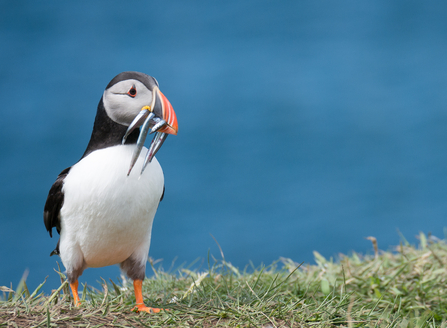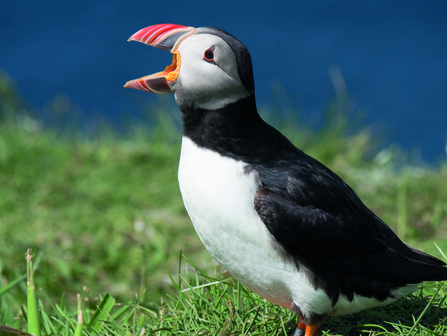If you asked me what my favourite seabird was, it would be the puffin and I’m sure I wouldn’t be alone. Whirling in from the sea with legs splayed and sand eels in their stunning beaks, they sum up everything that is wonderful about our sea cliffs in early summer. I’ve travelled hundreds of miles and jumped into open boats to see them on our offshore islands. But you don’t need to do this, because we have them right here in Yorkshire!
The stretch of coast from Yorkshire Wildlife Trust’s Flamborough Cliffs to RSPB Bempton Cliffs is the only place in mainland England to see them in significant numbers. Peer down from the clifftop path from mid-April to early July and they will be there, emerging from their burrows and launching themselves from the cliffs to bring in more fish for the young pufflings.
It can be a challenge. Puffin food sources are under pressure as their favourite sand eels have drastically reduced in recent years. The climate emergency is bringing increasingly warm and stormy seas which take their toll. Fish can be stolen by airborne piracy of herring gulls or lesser black backed gulls. Meanwhile, back on land, eggs can be robbed by jackdaws and gulls. Life can be tough for a puffin!



